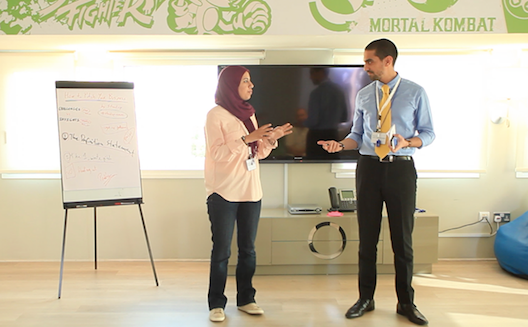How to make the first 30 seconds of your pitch really count


Editor's note: A few weeks ago, Rabih El Khodr from Standup Communication gave us his tips on how to pitch in under a minute. Now, he's got advice on how to shave your pitch down even further to 30 seconds! Read his tips below.
As Wamda's proud Pitch Coaching partner at Mix N' Mentor Dubai, I - in my capacity as founder of Standup Communication - had the pleasure of delivering a workshop on business pitching. This session convinced me yet again of how important 30 seconds can be.
It’s no coincidence that the typical TV commercial is 30 seconds long: advertisers and promoters have been using this magical timespan for decades now, enticing consumers to buy products and services. Statistic Brain, a group of numbers enthusiasts, went so far as to argue that the average human attention span in 2013 was a total of only eight seconds. Talk about an uphill battle trying to get your point across in a minute, or even 30 seconds!
The urge to stop listening
Business pitching is the ultimate seduction process; it's all about connecting with the hearts and minds of like-minded individuals. Be they investors interested in financial gain, business partners looking for inspiration, or media representatives on the hunt for a story, the point of any pitch is getting people interested in what you’re saying.
Therefore, the first 30 seconds of a pitch are the most important of your entire performance. You can't afford to waste precious time warming up. Why? Because right after you start, your audience, like it or not, are most likely already losing interest.
Don’t take it personally. This has become a cognitive reality in today’s age of multitasking, information overload, and multiple-screen browsing. Your public speaking performance should have the effect of a sharp axe splitting the log of distraction: swift and sharp. This is where the magic number ‘30’ kicks in.
So how to guarantee a great start to a business pitch?
A problem leading to a solution
During Wamda’s Mix N’ Mentor business pitching workshop in Dubai, I asked participants to describe their business in one sentence. Not one paragraph. Not a series of back-to-back phrases. One simple coherent sentence. This is what I like to call a 'definition statement' - one that defines your business as a solution to a problem. This statement should mark the end of your pitch’s inaugural 30 seconds.
What precedes should be a creative reveal to a problem. One that impacts a large group of people. One that affected you personally, since otherwise you wouldn’t have become an entrepreneur. So the first 30 seconds of your pitch should account for a logical, possibly intriguing succession of facts and interjections, all describing a real problem in dire need of a solution.

Maximizing impact
As you reveal your solution (your business or idea) through your definition statement, make sure to use strong impactful words. Bland terms like “great” or “awesome” will not get you anywhere; use epithets and adjectives that are both descriptive and insightful. For example, instead of saying “a great product that all people would use,” a phrase like “an easy-to-use app that simplifies online shopping” has much more built-in meaning, and will result in more impact.
A well-crafted start for your pitch is like a great takeoff: you’d be reaching cruising altitude in no time, and you’d feel much more confident and in control. Fumble your way through the first 30 seconds, and I promise you a bumpy road ahead. So make sure to diligently rehearse your opening lines.
You’d be doing your audience a huge favor in their battle to keep paying attention.
Lessons from Mix N’ Mentor
Let me leave you with some practical tips, courtesy of the wonderful participants who attended my business pitching workshop at Mix N’ Mentor:
-
Jump right into it: avoid introducing what you are about to say, just say it. Instead of saying “I’m going to start by telling you about a personal story,” say “three years ago… I lost a dear friend.” Your audience will be hooked instantly.
-
Make the connection fast: talking too much about the problem might wear your audience down. Try to have a punchy approach to your problem, with successive back-to-back points. This will make for a quicker transition to your definition statement by the end of the first 30 seconds.
-
Enjoy the reveal: the moment where you say your definition statement might be the most important juncture of your pitch. Make sure to take your time while revealing it, and make sure that you give each word its due weight. Your app is “revolutionary”? Let me feel the revolution when you say so.
In the end, your business pitch could be a gateway to professional and financial success, and in order to get to this finish line you'll have to master the first 30 seconds.
Ready, set, go!


